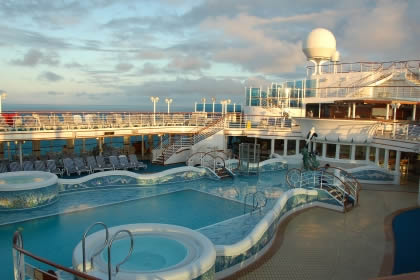Hawaiian Island Tourism
According to the State of Hawaii’s Department of Business, Economic Development and Tourism (DBEDT) website, the total visitor expenditures for February of 2007 increased 4.2 percent from last year. This totaled $963.1 million. The spending per trip also increased to 6.4 percent which came out to an average of $1,716 per person or $181 per person a day.
The top four visitor markets were from the U.S. West (+6.1%), while visitors from the U.S. West decreased (-9.9%), as well as Japan (-5.3%) and Canada (-5.3%).
Visitors spent $2 billion on the first two months of 2007. The total spending from U.S. West and Canadian visitors offset the decreased markets of the U.S. East and Japanese visitors. Total visitor spending increased on the Big Island at $296.9 million (+11%) and Kauai at $206.6. million (+3.4%) whereas Oahu decreased in spending with $863.1 million (-1.1%) as well as Maui at $585.9 million (-1.4%).
The total cruise visitors also rose in these first two months to 24.8 percent equaling 83,667 visitors. Including the visitor increase, there was also an increase in the amount of cruise visitor days to 25.6 percent. These visitors stayed on average 9.87 days.
Tourism is Hawaii’s most important economic enterprise. It has sustained the islands since 1995, when the last sugar plantation closed. Although tourism as Hawaii’s main economic activity is bittersweet, it has created many jobs for the islands people. In 2006, Hawaii had its lowest unemployment rate in 30 years.
According to the Hawaii State Department of Labor and Industrial Relations, the statewide labor force grew 17,150 and the number of employed persons increased by 18,100. The unemployment population dropped 25.6% from 17,550 persons to 13,050. This created a total seasonally adjusted labor force of 61800. This is all a testimonial to the strength of Hawaii’s local economy.
Even though unemployment is low and visitor spending is up, the cost of living is extremely expensive in Hawaii. It has one of the most expensive housing markets in the U.S. Over 90% of the food consumed in the islands is imported making it ridiculously costly to buy cereal or a tomato. And with an acre of land costing up to $95, too, it makes it hard to even grow a head of lettuce.
With increased urbanization from land developers building resorts and expensive subdivisions instead of affordable housing or agricultural crops, the high price of living increases every year.
Hawaii is ranked as one of the most expensive places to travel with expenditures of over $500 a day for food and lodging. Expect to pay almost 10% more on gas and if you want to shop be prepared to pay double what you would normally. The tax in Hawaii is high, it is a little over 4% and sometime surprises visitors.
Although traveling to paradise is pricey, it is worth it. Each island has its own beauty and charm. Some of the more popular places to go on the four main islands are truly magnificent.
On the Big Island there is Kona, Hilo and Parker Ranch to check out. All great little towns with there own feel. Oahu has the city of Honolulu and the North Shore where all the big surf competitions happen every winter. Maui has Lahaina, Kihei and Paia. Each town is different and unique. And then there is Kauai which is truly lush and tropical with fantastic hiking and its historical town of Poipu. Each island is unique and special, making the Hawaiian Islands a jewel in the Pacific.
